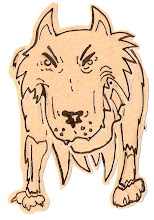I'm not sure at this point but I think a murky look would suit this best. One that is quite dark and heavily blurred to try and highlight the terror and confusion of the situation although maybe 6 different styles of rendering would show clearly that these are 6 different perspectives.
 Because I have a very sketchy way of drawing usually, my intention for these images would be for use as concept or developmental artwork for a film or video game or even a much better polished sequence of images. Like the piece above for a recent 'Kirby' game from Nintendo, only I expect my work to be of much lower quality.
Because I have a very sketchy way of drawing usually, my intention for these images would be for use as concept or developmental artwork for a film or video game or even a much better polished sequence of images. Like the piece above for a recent 'Kirby' game from Nintendo, only I expect my work to be of much lower quality.Anyway, this idea came to me as I drew from this image by James Jean which deals with the subject of alcoholism by replacing it with a metaphor about a drowning sea creature (that is, a sea creature which drowns people, not itself).


What spurred me on about this image was the terror that I could imagine a tentacle like this emerging from the sea just portside of a vessel. My vision from here was to render all six images with the care and skill that had been poured into this drawing but.. already I could see that this would be a very time consuming task. Because I had abandoned simplicity at this point in the sake of creating an involving image, I had the feeling that like other projects that my conclusion was too complex for the time involved and my inability to compromise and try something simplier would result in hurried messy pieces.
And yet I didn't stop and think about it there. I really wish that at this point, I had looked at Jeans work and considered 'You know, it takes him a couple of weeks to make an image that powerful. I don't have that time but if I consolodated all the images into one, then maybe I'd have a shot'. Fearing the vague 'equivelent of 6 images' phrase from the brief though, I stuck stubbornly to this idea that I had to crack out 6 high quality images rather than one larger piece.
Anyway, here are sketches for the pieces that I would work on to create the final works for this brief:

Kraken's View under the ship.
 Navigation crew member's view after detecting something on the sonar.
Navigation crew member's view after detecting something on the sonar.
These two images combined make for the portside view of a passenger who witnesses the emerging of the first tentacle.

The perspective of an unlucky passenger who is snatched away by a tentacle and held aloft.

A passenger who has made a break for it in a life boat witnessing the destruction of the ship with an earlier sketch of the 'caught' image above shown below it. This particular shot was a difficult one to imagine clearly as I couldn't figure out exactly what it would look like to have a tentacle wrapped around oneself. So I just drew myself into the image from the neck down and then used that as a frame.
The intended audience for these works I guess is anyone. I know this is a bit of a copout as it suggests that I havn't really considered who I'm making this for but my true intention for this work was to try and involve people, not exclude them. There are no inside jokes in the images, just.. my interpretation of what you might see if you happened to be on the ship on the wrong day. However I should say that my choice to not have any other people visible in the perspectives of these witnesses other than themselves is quite alienating and isolate. This was a mistake I feel because it cuts the audience off from the familiar surroundings of their peers and gives a kind of nightmarish feel to the sequence as the viewer stumbles about the scene alone and confused.
Now to see the finalised images and descriptions of how they came about.

No comments:
Post a Comment